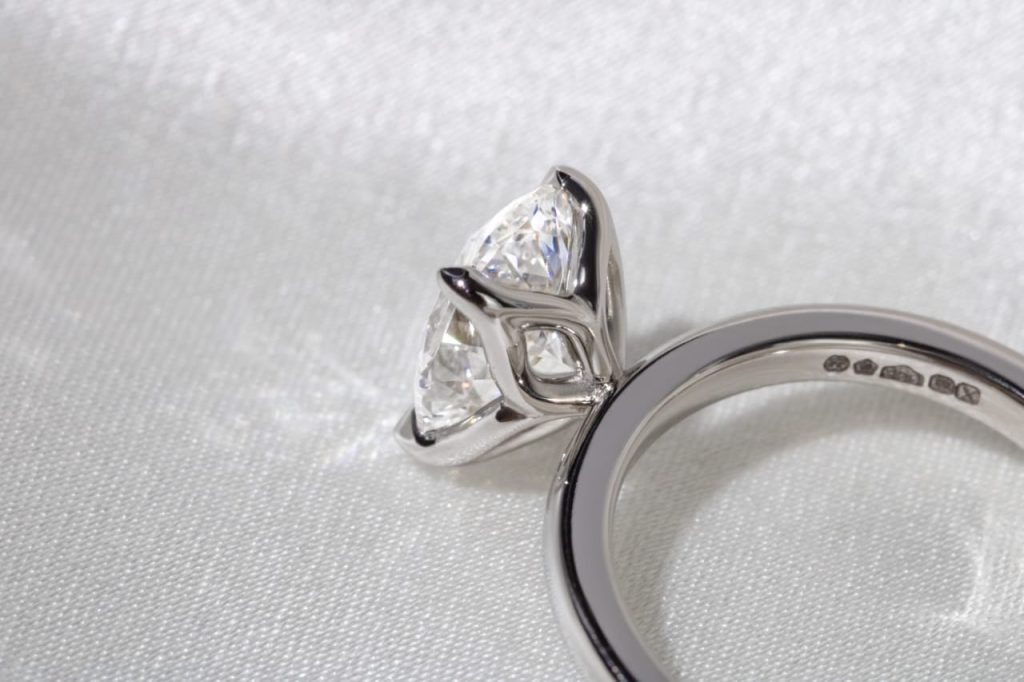Introduction
lab grown diamonds have become extremely popular for engagement rings. Whether it is appearance wise or by chemical properties, these diamonds are exactly the same as natural ones but value for money and sustainable. All covered in our comprehensive guide to lab created diamonds, with nuanced examples allowing you to choose among them wisely.
What are Lab Grown Diamonds?
Man-made diamonds are synthesized in sterile environments through various high-tech processes intended to emulate the conditions under which natural diamonds develop. These diamonds are constructed from carbon atoms under the same crystal structure as natural diamonds ensure they have equal hardness, brilliance, and durability.
Chemical and Physical Properties
There is virtually no way to differentiate between a lab grown diamond, and an earth mined one. They are both 10 on the Mohs scale, have identical refractive index and share nearly equal fire and brilliance. These differences can only be distinguished with advanced gemological equipment.
Pros of Lab Grown Diamond Engagement Rings
Ethical Considerations
Lab Grown Diamonds And Ethical Sourcing Where natural diamonds are often bred in conflict zones and unethical mining practices, the lab grown diamond is created with our laboratories to provide an exact origin type that has not come from politically unstable countries.
Environmental Impact
Green input since lab created diamonds are grown in a controlled facility and have about nothing impact on the environment compared to traditional diamond mining. Environmental damage – Natural diamond mining creates substantial land disturbance, water consumption and energy use. In comparison lab grown diamonds use less water, energy and have no land excavation.
Cost Efficiency
The good news is that these are about 30-40% less expensive compared to natural diamonds. With these very affordable prices, consumers can buy a bigger or better quality stone with the same budget, making them more desirable for lab grown diamond engagement rings.
How Lab Grown Diamonds Made
High Pressure High Temperature Method
The HPHT method refers to replicating the high pressure and temperature circumstances in which natural diamonds germinate. A tiny diamond seed is set in carbon and bombarded with heat, then pressurized until it creates a bigger diamond crystal.
Chemical Vapor Deposition Method
Diamond seed is introduced to a Watereous solution of Carbon Reach gas in the Chamber under CVD process. This ionizes into plasma, and carbon atoms in the gas stick to a seed growing the diamond layer by layer. This approach affords far more control in regard to how the diamond will perform.
Finding the Perfect Lab Grown Diamond Ring
The 4 Cs
- Cut: Diamonds are available in a variety of shapes, and obvious sizes do not matter when it comes to glory. Popular cuts: All of the most popular diamond shapes are available as lab gowns-including round, princess and emerald! When a diamond is cut well, light gets reflected around the inside and outside of it to create sparkle.
- Color: Lab diamonds are available in a wide range of colors. White diamonds are prevalent yet you may also pay for fancy colors like pink, blue or yellow ones and get a lower cost than natural coloured gems.
- Clarity: The presence of internal or external imperfections in a stone. Clarity- Fewer inclusions and blemishes found Lab created diamonds which make them a better option over natural diamond clarity.
- Carat: Diamond weight is measured in carats. Thanks to the cost advantage of lab grown diamonds you may even be able to buy a larger diamond for what would have previously only allowed you a far smaller natural one.
Settings for Lab Grown Diamond Engagement rings
- Solitaire: Perfect for showcasing the diamond
- Halo: Encirclement around the center stone with additional bling.
- Pavé: Numerous diamonds are set close together in the band.
- Three-Stone: Represents your relationship past, present and future.
Care of Your Lab Grown Diamond Ring
With proper care your lab grown diamond engagement ring will be as beautiful today as the day it was shipped to you years and even generations from now. A zippy scrub with a mild soap solution and soft brush will have it shining. You should also have your ring cleaned and checked yearly by a professional.
Future Trends in Lab Grown Diamonds
Also, the demand for lab grown diamonds is expected to increase. The progression of technology will continue to allow for more innovation in diamond quality and customization. As a person who is earth mindful and ethical, you ought to choose using lab-grown diamonds for the reason that lab grown diamonds are now going to be marked as a preferred pick.
Conclusion
Lab created diamond engagement rings are beautiful, sustainable and affordable. Besides being authentic to natural diamonds, ethically sourced and having less environmental repercussions overall they are the future of the diamond industry. Whether you need a traditional solitaire and halo environment, lab created diamonds are the most important option for representing your loved ones.
